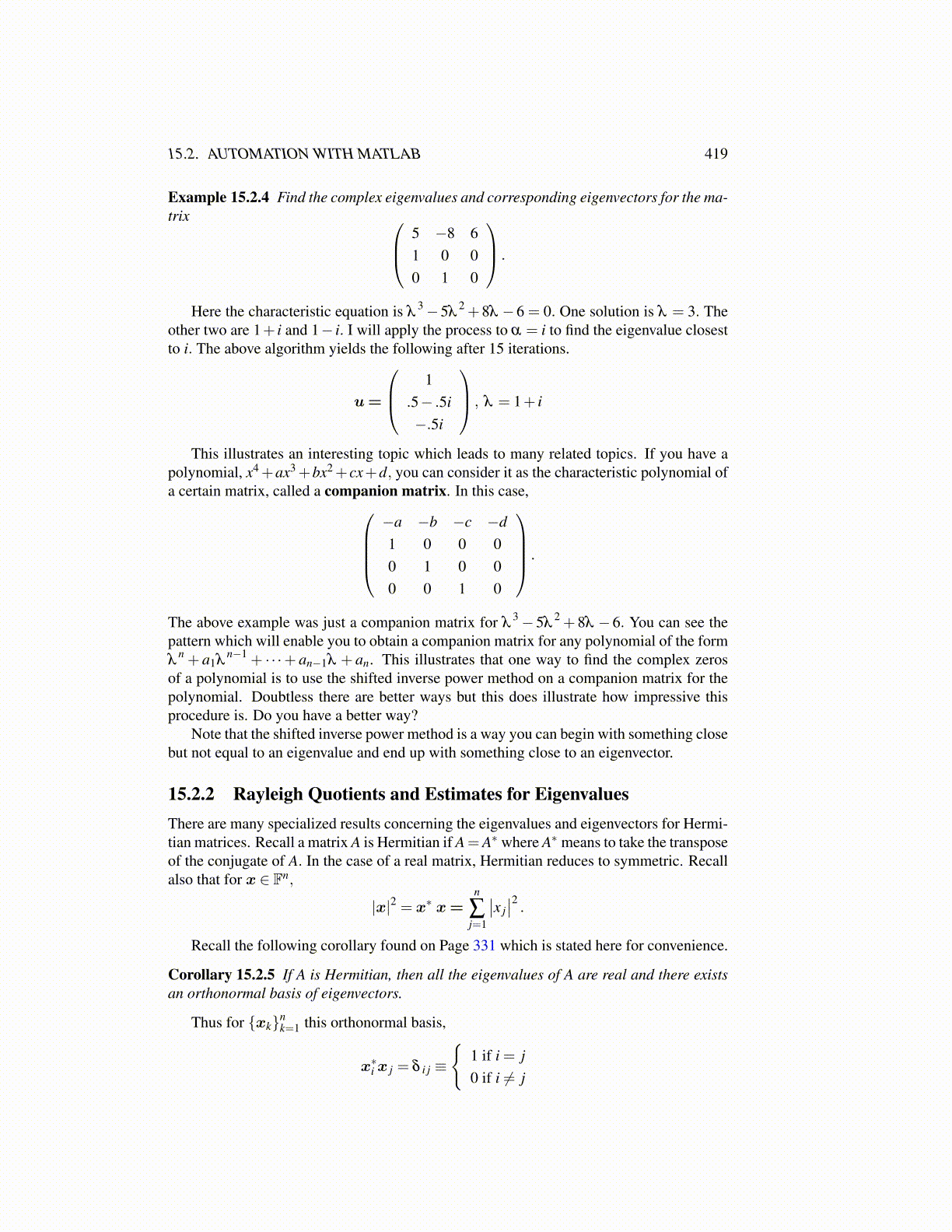
15.2. AUTOMATION WITH MATLAB 419
Example 15.2.4 Find the complex eigenvalues and corresponding eigenvectors for the ma-trix 5 −8 6
1 0 00 1 0
.
Here the characteristic equation is λ3−5λ
2 +8λ −6 = 0. One solution is λ = 3. Theother two are 1+ i and 1− i. I will apply the process to α = i to find the eigenvalue closestto i. The above algorithm yields the following after 15 iterations.
u=
1.5− .5i−.5i
, λ = 1+ i
This illustrates an interesting topic which leads to many related topics. If you have apolynomial, x4 +ax3 +bx2 +cx+d, you can consider it as the characteristic polynomial ofa certain matrix, called a companion matrix. In this case,
−a −b −c −d1 0 0 00 1 0 00 0 1 0
.
The above example was just a companion matrix for λ3− 5λ
2 + 8λ − 6. You can see thepattern which will enable you to obtain a companion matrix for any polynomial of the formλ
n + a1λn−1 + · · ·+ an−1λ + an. This illustrates that one way to find the complex zeros
of a polynomial is to use the shifted inverse power method on a companion matrix for thepolynomial. Doubtless there are better ways but this does illustrate how impressive thisprocedure is. Do you have a better way?
Note that the shifted inverse power method is a way you can begin with something closebut not equal to an eigenvalue and end up with something close to an eigenvector.
15.2.2 Rayleigh Quotients and Estimates for EigenvaluesThere are many specialized results concerning the eigenvalues and eigenvectors for Hermi-tian matrices. Recall a matrix A is Hermitian if A=A∗ where A∗ means to take the transposeof the conjugate of A. In the case of a real matrix, Hermitian reduces to symmetric. Recallalso that for x ∈ Fn,
|x|2 = x∗ x=n
∑j=1
∣∣x j∣∣2 .
Recall the following corollary found on Page 331 which is stated here for convenience.
Corollary 15.2.5 If A is Hermitian, then all the eigenvalues of A are real and there existsan orthonormal basis of eigenvectors.
Thus for {xk}nk=1 this orthonormal basis,
x∗i x j = δ i j ≡
{1 if i = j0 if i ̸= j